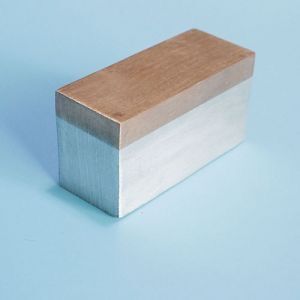There are three major factors in the specification of
aluminum clad copper sheet bimetal: thickness, width, and length. The thickness is divided into the total thickness and the thickness of the copper layer. The width is divided into the total width and the width of the copper layer. The length is divided into the profile plant and the coil. These sizes will be affected by these elements: process, equipment, structure, material In terms of production,
aluminum clad copper sheet bimetal have about 3 processes.
Process A:
Total thickness: theoretically the thinnest can be 0.1mm, currently the thinnest existing 0.5mm
At present, the thickest is 15mm
Thickness of copper layer: generally expressed as the proportion of copper layer total thickness, the conventional ratio is:
5%; 10%; 15%; 20%;
Total width: conventional: 600mm; 800;
Custom can be done: 1000mm
Total length: Plate form Conventional: 1000mm or 1200mm
Large volume can be made.
Process B:
Total thickness: This process is characterized by thick plates. Generally, the total thickness is less than 2mm, so it is less advantageous, but the maximum thickness is more than 50mm.
Thickness of copper layer: In the total thickness range, the respective thickness of copper and aluminum can be regulated, and the thickness of aluminum and copper can be thin, and the thickness of copper and aluminum can also be thin.
The disadvantages are: thickness has a certain tolerance and the interface is not absolutely uniform.
Total width: conventional: within 2000mm
Total length: about one to two meters, difficult to roll.
Process C:
This process, the total thickness is similar to A, is biased in the thin plate, but the advantage of the copper layer thickness ratio can be relatively enlarged, the legendary combination of strength, high temperature capability, is higher than the A. Inadequacies, is the total width of the device now At most more than a hundred mm, the small is only about 70mm, and the cost is higher than A.
